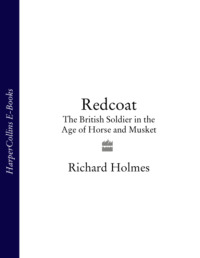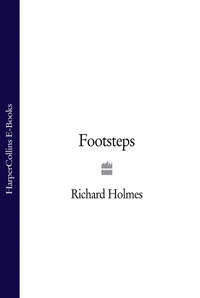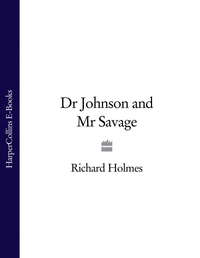
Полная версия
Sahib: The British Soldier in India 1750–1914
It was a prophetic comment, for Hodson – brave, hard as nails and deeply controversial – was eventually to raise his own irregular cavalry regiment, Hodson’s Horse, which left a bloody track behind it during the Mutiny. ‘I never let my men take any prisoners,’ he wrote, ‘but shoot them at once.’ In one sense he represented ‘that side of themselves which the British in India preferred not to see’. He was mortally wounded at Lucknow in March 1858 and was buried there in the grounds of the La Martinière school.19 His tombstone bore the words: ‘Here lies all that could die of William Stephen Raikes Hodson.’ For all his reputation as a looter, when his effects were auctioned, as was the custom, by his comrades, they fetched only £170, and his much-loved widow Susan was spared poverty only because the Secretary of State for India gave her a special grant. His regiment later formed the 9th and 10th Bengal Lancers, and survives to this day in the Indian army, an example of a thread of continuity that was often twisted but never broken.20
It is impossible to think of the British in India without paladins such as Hodson, John Nicholson, Henry Lawrence and Herbert Edwardes. But they were always in a minority, even amongst British soldiers. Far more of the protagonists in British India never held the Company’s, King’s or Queen’s commission, and many, like Private George Smith, who served in India in the 1870s, had their own very distinctive views of the country and its people.
In India’s clime, ‘midst dust and boiling heat,
Where swaddies are tumbled with their sweaty feet,
The land of pumpkins, melons and bananas,
Where soldiers’ pay is reckoned up by annas,
Where people of their clothes cannot much brag,
But walk out gaily in a clean arse rag.
The natives’ bodies give a sweet perfume,
Like old dead horses smelling in full bloom.
The land of sand-fly, mosquitoes and bugs,
That fly round buzzing in a soldier’s lugs.
Sleep away and sweat comes out like tallow,
And rolling about, he damns the Punkah wallah,
Calls him a sowar, which is nothing new,
Or cracks his head with an ammunition shoe.
If that doesn’t do for natives’ skulls are thick
He tries to rouse him with a well aimed brick …
The cooks come crying take your coffee sahib,
And various merchants bawling out cold pop,
Curried tripe, cow heel, boiled sausages and sop,
And other curious smelling doses,
It would make most epicures turn up their noses.
And coves crying shove up those bloody tatties,
Or that damned bheestie has not filled the chatties.
And parrots squeaking, mad soldiers roaring,
And blokes on charpoys sleeping hard and snoring.21
So many ingredients of military life in India are here. The punkah wallah tugging the string that moved the punkah – a swinging fan hung from the ceiling; sowar – actually a trooper in an Indian cavalry regiment – remained a term of abuse left over from the Mutiny; tatties were grass mats used to cover windows in hot weather, kept wet in an effort to reduce room temperature; a bheestie (like Kipling’s Gunga Din) was a water-carrier; a chatty was a spherical earthenware water pot, and a charpoy (a word still used in the British army until recently) a bed.
But writing about India presents a particular problem, because spelling, transliteration and terminology have changed. An author is often faced with the alternative of using outdated spellings which are nonetheless familiar to an English-speaking readership, or adopting current spellings which make history infinitely more difficult to follow. I had little difficulty in settling on Bombay rather than Mumbai and Madras instead of Chennai. It was harder to decide that my heroes would not look out from Kanpur across the Ganga to Avadh, as one might today, but would see Oudh across the Ganges from Cawnpore.22 I have retained the term Sikh Wars, Anglo-centric though it is, because that is what most (though not all) authors writing in English call them. More controversially, I call the events of 1857–59 the Mutiny, rather than the Indian Revolt, whilst happily acknowledging that it was not the exclusively military phenomenon that the word mutiny implies.
The quest for consistent transliteration would compel us to cross a bridge too far. We have already seen William Hodson write about Hindoos and Hindus in the same piece. The title pages of Richard Burton’s three books on Sind all rendered the spelling of the province differently, and although I style the place Sind, I cannot deny that the local regiments had Scinde in their title. Amongst the graves in Rajpura cemetery, Delhi, are those of two officers killed in the same battle, rendered on one tombstone as Badlee Surai and on the other as Badli ka Sarai. Lieutenant Richard Barter, who survived the battle, preferred Badli ke Serai, and so, generally, do I. Where I give an individual a rank it is generally the one he held at the time in question: Fred Roberts died a field marshal and a peer, but he was a subaltern on most of the occasions when I mention him.
Lastly, the India I write about now consists of India, Pakistan and Bangladesh (with Burma administered by the British as part of India for much of the period). The old Indian army brought together men of many religions and none, and it is almost impossible to resist the conclusion that Partition was one of Britain’s less fortunate legacies. I have wandered about many of the battlefields described on the pages that follow, crossing the little River Cauvery to see where British cannon balls gouged the walls of Tipu’s fortress of Seringapatam in 1799, trudged through the mud (for it was the tail end of the monsoon) across Arthur Wellesley’s – the future Duke of Wellington’s – 1803 battlefield of Assaye, and looked, from the urban sprawl of Delhi’s Kashmir Gate, towards the ridge from which the British attacked the city. Perhaps most memorably, five years ago, I rode from Gilgit across the Shandur Pass to Chitral, brushing the Afghan frontier with my right sleeve, in the steps of Lieutenant Colonel James Kelly’s tiny force which raised the siege of Chitral in 1895. We rode into Chitral behind the bagpipes and drums of the Chitral Scouts, who were shrilling out those North-West Frontier favourites like ‘Hielan’ ‘Laddie’ and ‘Black Bear’, lasting evidence of the attraction of the music of one tribe of tough hillmen to another. In an orchard in the shadow of Chitral Fort I said goodbye to my Afghan pony, thick-necked, grey-coated and perverse, having narrowly decided against buying him so as to have the satisfaction of seeing his name on a tin.
Travelling in India and Pakistan is often uncomfortable, but feeling the harder edge of the subcontinent is a useful antidote to the excessive romanticism that, all too easily, seeps into this sort of subject. Twenty miles a day on beans and hay from the Karakoram to the Hindu Kush is no easy matter even today, but I can at least begin to imagine what it must have been like for men who did it in khaki drill jackets and ammunition boots. How their grandfathers coped with red serge and white cross-belts in the heat of the plains is another matter altogether, as we shall soon see.
PROLOGUE
Drums on the Sutlej
DARBY FULCHER, drummer in the grenadier company of HM’s 50th Regiment of Foot, normally wakes his comrades on campaign by walking through the lines of sleeping men, rapping out the insistent drumbeat of the General Call to Arms; but today, 10 February 1846, will be different. He is eighteen years old, with six years’ service in the army, all of it in India, where he arrived as a band boy in the summer of 1840. The result of a brief and tipsy union between a sailor and one of those mercenary Portsmouth ladies unkindly known as ‘the fireships of the sally-port’, young Darby decided that a red coat was better than an empty belly, and joined the 50th as it passed through Portsmouth on its way to embark.
Simply getting to India was not easy. The East Indiaman Ferguson, which carried the 50th’s recruits from Portsmouth, struck a shoal in the Torres Strait, but all her passengers and crew were safely taken off before she foundered, and he soon found himself in the military cantonment at Chinsura, just up the River Hooghly from Calcutta. The 50th lost twenty of its soldiers from cholera in its first months in India, before sailing to Moulmein in the autumn of 1841, in the expectation that friction with the King of Burma would lead to another war. But it was soon back in Chinsura, only to lose eighty more men (including, inauspiciously, Assistant Surgeon Burns) in another cholera epidemic.
A move up the Hooghly to a new garrison at Cawnpore proved scarcely less lethal: in three separate accidents the regiment lost four sergeants, the drum-major, sixty-three privates, four women and eleven children. On 29 December 1843, Darby Fulcher had his baptism of fire when a force under Major General Sir John Grey beat the fierce Marathas at Punniar and in which the 50th lost just an officer and eight men. Lieutenant Bellars, the regiment’s acting adjutant, described this battle in his diary:
Directly we reached the top of the hill … the enemy’s cannon balls were falling to the right and left of us, but being badly directed did us no harm. We moved a few paces over the hill, when they opened a heavy fire of grape and canister upon us, with four guns planted about fifty paces from the bottom of the hill, besides a tremendous fire from their infantry, who were in a small ravine. We made the best of our way down the hill, which was very high and steep, keeping the best order possible, and continuing our firing the whole time. We halted at the bottom under cover of a small bank and hedge, keeping up our fire for about ten minutes, when we were ordered to charge, which we did with a glorious cheer. But so well did the enemy stick to their guns, that the last discharge took place when we were within ten yards of them, and the gunners were only driven from their guns at the point of the bayonet. So determined were they, indeed, that until actually unable to move from wounds, they cut away with their sharp sabres at our men, many of whom were severely wounded by them. Thus ended this short but sharp skirmish, with the capture of four guns (one a large brass one) and a few prisoners.1
Fulcher’s dark hair, sharp features and prominent teeth made the sobriquet ‘band rat’ all too appropriate, and when he left the band to become a company drummer the name stuck. By now, as one of the many Irish wits in the 50th observed, he was a very big rat indeed, and should therefore be known as Bandicoot Fulcher. Colour Sergeant Thompson, as serious-minded as befitted the company’s senior non-commissioned officer, confirmed that this was wholly appropriate, for the bandicoot or musk rat ‘was distinguished by its troublesome smell’, and here too, he pronounced, there was a distinct resemblance.2 The abuse was as good-natured as barrack-room jokes can be, and Fulcher, big for his age, with a vocabulary of the most studied profanity and a taste for strong drink, fitted comfortably into the tight little world of the grenadier company, with its three officers and eighty NCOs and men. It was the senior of the 50th’s eight companies, leading the way when the battalion marched in column, and on its right when it shook out into line. Fulcher had no idea why it was called the grenadier company, for grenades (whatever they might be) had not been issued within living memory.
His job entailed a good deal more than drumming. A company’s two drummers were its captain’s confidential assistants, holding his horse and helping him into the saddle, running errands for him in barracks and standing close by him in the field to relay his orders and interpret other drumbeats. They administered floggings, under the eyes of the drum-major, sergeant major and adjutant. The humiliating ritual of drumming a disgraced soldier out of barracks involved the man, his badges and buttons cut away, being marched through the camp to the tune of ‘The Rogue’s March’:
Twenty I got for selling my coat
Twenty for selling my blanket
If ever I ‘list for a soldier again
The devil shall be my sergeant
He was then kicked through the barrack gate by the most junior drummer – the whole ghastly process sometimes being known as ‘John Drum’s entertainment’. Useful though they were in barracks and the field, drummers had a reputation for being badly behaved. Captain Albert Hervey of the 41st Madras Native Infantry recalled that:
While passing through a village early one morning there were a number of ducks waddling along to a piece of water hard by. Our drummers came right amongst them, several were snatched up unobserved, and crammed into the drums. At another time, as we passed through a toddy-tope, some of them contrived to get away and imbibe plentifully of tempting beverage. They are strange rascals are our drummers, and up to all kinds of mischief.3
Darby Fulcher wears a waist-length red serge ‘shell jacket’ closed by ten pewter buttons, with blue standing collar and pointed cuffs. The change to blue is recent; the regiment’s facings were once black, accounting for its nickname ‘The Dirty Half-Hundred’. His grenadier comrades show their elite status by crescent-shaped red shoulder wings edged with white, and Fulcher, in addition, is liberally chevroned with white drummer’s lace. His flat-topped Kilmarnock cap has a white canvas cover and his regiment’s number in a brass Roman numeral ‘L’ above its peak. Dark blue woollen trousers with a narrow red stripe fall over square-toed black boots, issued on the assumption that they will fit either foot. Fulcher’s function means that he is spared the white pipe-clayed cross-belts, supporting an ammunition pouch on the left and bayonet on the right, worn by his comrades; but, like them, he carries a circular water-bottle on a leather strap across his left shoulder and a white canvas haversack slung across his right. A short sword with a brass hilt sits over his left hip, and it is entirely in character for him to have sharpened it.4
His side drum hangs, for the moment, over his right shoulder, skin flat against his bent back, and he holds it there by one of its pipe-clayed cords.5 When he needs to use it he will hook it onto the drum carriage, the broad white belt that crosses his right shoulder, but there is no sense in doing that too soon, for the drum will rub against his left thigh and gall his knee, where it balances when his leg is bent.
Fulcher’s musical training derives from Samuel Potter’s book The Art of Beating the Drum, first published in 1810, but still passed on, becoming greasier with age, to successive drum-majors in the 50th. Potter advises:
Before a boy starts practicing a drum place him perfectly upright and place his left heel in the hollow of the right foot. Put the drum sticks into his hands, the right stick to be grasped by the whole hand 2½ inches from the top, similar to grasping a sword or stick when going to play Back-sword. The left hand one to be held between the thumb and forefinger close in the hollow, leaving the top as much protruding resembling a pen when going to write.
Fulcher begins each beat with his elbows level with his ears and the drumsticks meeting in front of his nose. He has long learnt ‘to beat the drum with ease to himself, and it will appear slight those who see him as it ought to be, the pride of every drummer to beat his Duty with an Air and Spirit’. He began by learning the Long Roll, and then went on to a series of rolls, flams, drags, strokes and lastly the paradiddle, a roll beaten with alternate sticks.
The liturgy of his trade is now burnt into his young brain, and he can rap out all the calls of barrack life and field service, quickly telling his captain what call the commanding officer’s drummer has just begun. He knows that on a normal morning in the field, with no marching or fighting to be done, he will beat Camp Taps, ‘the First Signal on the Drum; it must be repeated from Right to Left of the Line by a drummer of each regiment and return back from Left to Right previous to the reveille’.6 On campaign, however, the jaunty drag and paradiddle of the General is usually appropriate, and its message is blunt: officers and men are to rise at once and prepare to fall in under arms, for there is business at hand.
But this morning of 10 February 1846, the officers and men of the 50th fall in silently, without beat of drum, before daybreak, and set off in column, on a front of four men, company following company with short gaps between them, across a flat countryside liberally dotted with scrub. The morning smells of spice, smoke, urine and dung, shot through with a tang of tobacco – for many officers, even at this early hour, cannot be parted from a cheroot.
Although the politics of the war mean little to Darby Fulcher and his comrades, nobody present that morning has any doubt that this conflict (later known as the First Sikh War) is a very serious contest between the armies of British India and the Sikhs, who had crossed the River Sutlej, which bordered their territory, in December 1845. They would be beaten, if that is quite the right word for such doggedly fought, bloody and inconclusive battles, at Mudki on 18 December and at Ferozeshah three days later. In these two actions the 50th lost a total of 244 of its officers and men killed and wounded, amongst them the grenadier company’s other drummer. The regiment fought in the altogether more successful battle of Aliwal on 28 January 1846, when another eighty-six men were hit.
The dull odour of bodies in clothes changed too rarely is now heavily overlaid with the sulphurous, bad-egg stink of black powder, for British infantrymen still ply their trade with a smooth-bore muzzle-loading musket, and in the process smear both unburned powder and its greasy residue all over themselves.
This is not quite the same musket carried at Waterloo, for in September 1841, earlier than most, the regiment received muskets with the new percussion lock. A man no longer has to tip powder into the musket’s priming pan, snap the steel shut over it, and hope that when he presses the trigger the flint will strike sufficient spark to ignite the priming and go on to fire the main charge. He now places a small copper cap filled with fulminate of mercury onto the nipple fitted to his musket-barrel, just where the touch-hole used to be. When the trigger is pressed the cock falls to burst the cap and, barring the most uncommon accident, fires the musket. The 50th, drawn up in line two ranks deep, can loose off four volleys a minute. Although a soldier has little chance of hitting an individual aimed at 200 yards away, volleys can do shocking damage at close range. However, any experienced officer trudging forward through the bushes in the half-light will tell you that battles are not won by endless volleying. Indeed, some harbour the conviction that firing actually defers a decision, and it is important to bring the bayonet – sixteen inches of fluted steel – into play as quickly as possible.
This view would certainly have found favour with Lieutenant General Sir Hugh Gough, the sixty-seven-year-old Irishman in command of the British army during the First and Second Sikh Wars. A couplet composed by an officer with a classical education, for Alexander the Great had been stopped by the Sutlej, caught the feel of the man.
Sabres drawn and bayonets fixed,
Fight where fought Alexander.
Old Paddy Gough’s a cross betwixt
Bulldog and Salamander.
At Mudki and Ferozeshah, Gough launched direct attacks on well-held Sikh positions, and before the day is out, when told that the ammunition for his heavy guns is running low, he will exclaim: ‘Thank God! Then I’ll be at them with the bayonet.’7 Yet nobody can say that Hugh Gough spared himself. With his mane of white hair and long white ‘fighting coat’, he is always to be found where the fire is hottest. ‘I never ask the soldier to expose himself where I do not personally lead,’ he later declared. ‘This the army knows and, I firmly believe, estimates.’8
Gough’s plan this morning has an unusual measure of subtlety: two feint attacks. His Sikh opponents have now been pushed back across the Sutlej River into their own territory everywhere save here near the village of Sobraon, where they hold a strong position facing southwards. It is shaped like a long, flattish letter U, a mile and a half wide along its southern side, with its open end to the river, and a pontoon bridge behind it. A Spanish officer in the service of the Sikhs has designed formidable defences, consisting of two concentric lines of earth ramparts, twelve feet high in places, with arrowhead bastions jutting out in front of the embankments and a broad ditch in front of them. On the Sikh right the ground is too sandy for the construction of high ramparts, and on these lower earthworks – too unstable to bear the weight of proper artillery – the Sikhs have planted a line of 200 zumbooruks, light swivel guns usually fired from a camel’s saddle.
The Sikh position is held by some 20,000 infantry with seventy guns, and there are more infantry and guns dug in on the north bank, covering the bridge. Gough has about the same number of men but fewer guns. However, drawing confidence from the fact that thirty of them are heavy howitzers and five are powerful 18-pounders, he decides on a three-hour bombardment by guns and rockets, followed by an infantry assault. His left-hand division, under Major General Sir Robert Dick, will attack the Sikh right, apparently their weakest sector, while his centre division, under Major General Sir Walter Gilbert, and his right division, under Major General Sir Harry Smith, will make feint attacks to prevent the Sikhs from concentrating to meet Dick’s assault. Gough’s situation is complicated by the fact that the Governor-General of British India, Sir Henry Hardinge, is present with the army. He is a lieutenant general too, and although he has volunteered to serve under Gough in his military capacity, he is not slow to exercise his superior civil authority if he feels it right to do so. He has approved the plan, but only in guarded terms. ‘Upon the fullest consideration of the question,’ he wrote, ‘if the artillery can be brought into play, I recommend you to attack. If it cannot and you anticipate a heavy loss, I would recommend you not to undertake it.’9
All this is hidden from Darby Fulcher as his battalion moves forward without drumbeat, in column in the dark at about 4.00 a.m. Ahead of it marches HM’s 31st Foot, and, a little less than two miles from the eastern face of the Sikh entrenchments, it deploys from column into line, with its right flank on the Sutlej and its left joining the 47th Bengal Native Infantry. The 50th swings into line about a hundred yards behind, with its grenadiers nudging the river bank and its light company, on the left of its line, in sight of the grenadiers of the 42nd Bengal Native Infantry. At the first sign of dawn, the whole line moves forward, to within range of the Sikh guns, and the men lie down. Even when the sun comes up it is still too misty to see what is happening, which is as well, for some of the British heavy guns are not yet in position.
At about 6.00 a.m. the first shots are fired. One young artillery officer is to remember the scene well:
On that day, when I first smelt powder, I served with the heavy howitzers and I can never forget the moment when old Gough (who was there in person) sent the order to ‘open fire’. No 1 fire! No 2, 3, 4, 5, 6. Six 10-inch shells hurtled through the mist just lifting, and could be seen in the still dark morning light, bursting in the enemy’s camp and entrenchments. A minute’s pause, and then the hum of a surprised camp like a vast hive, followed by the drums beating to arms, and the trumpets of the Sikh host sounding the alarm.10









